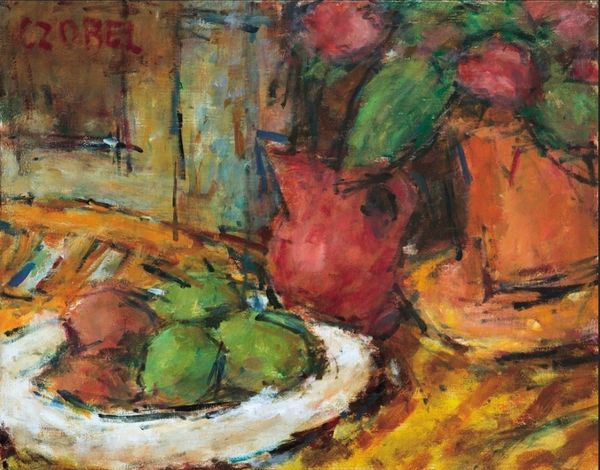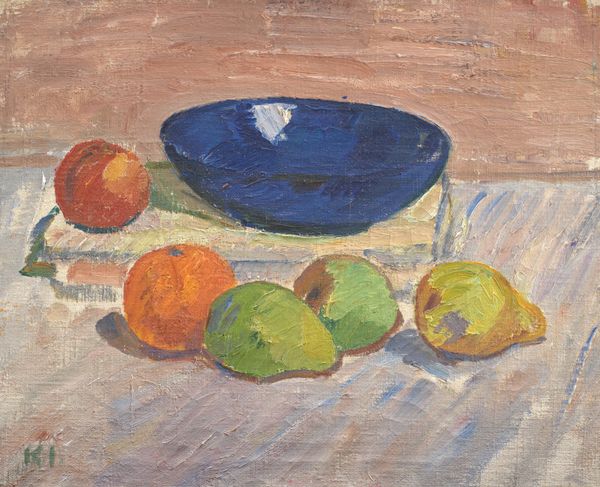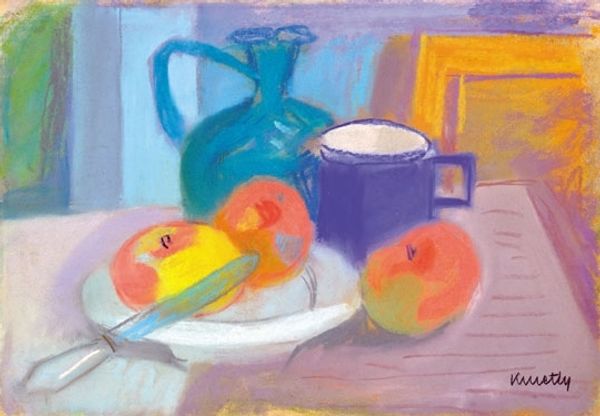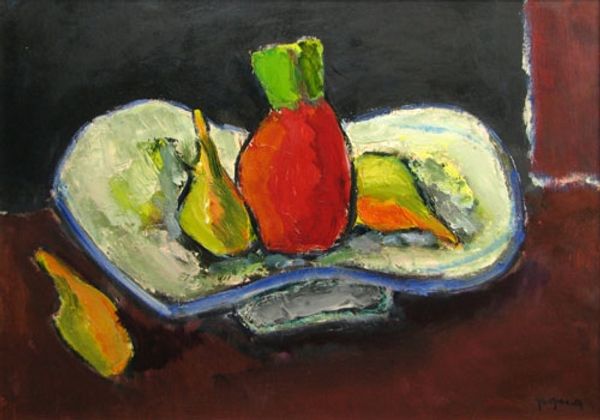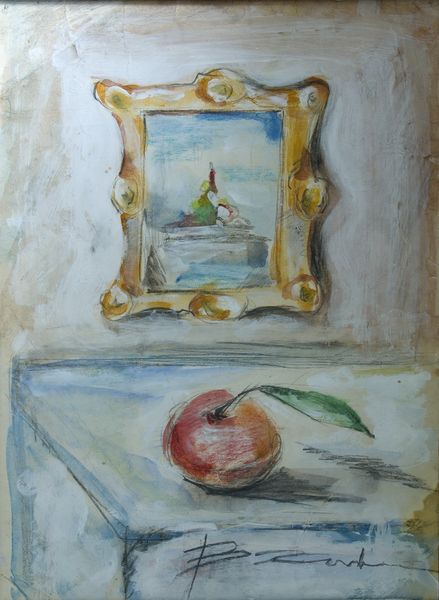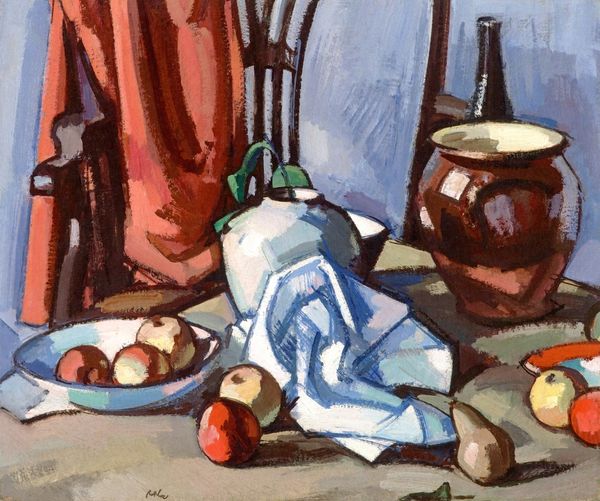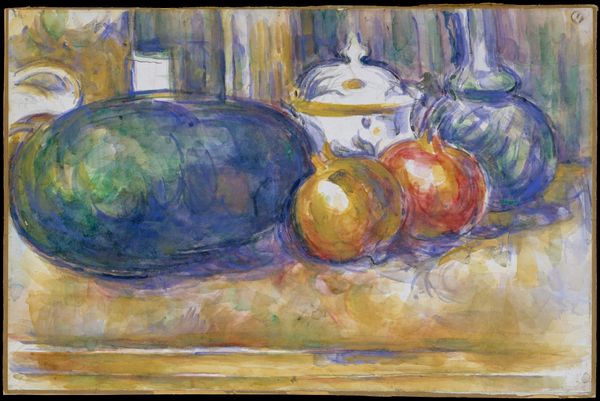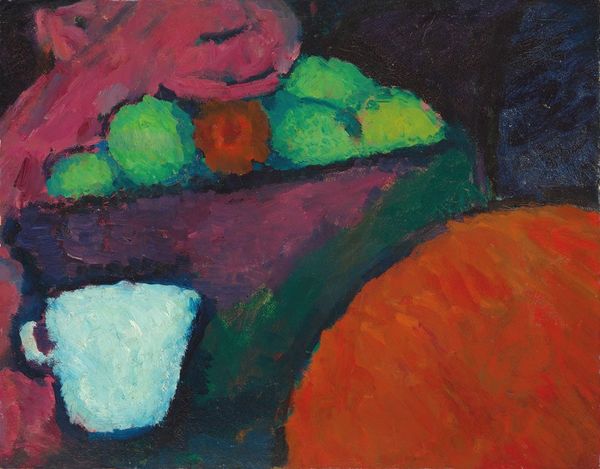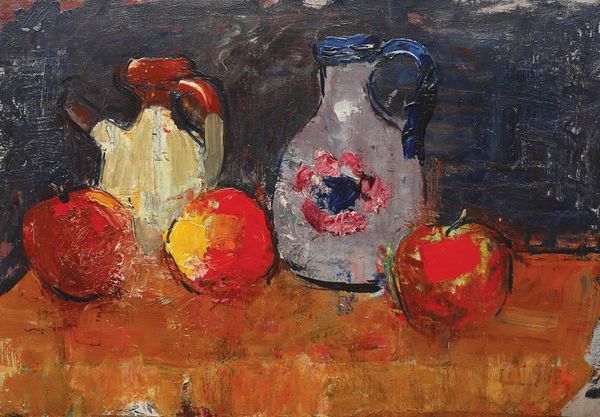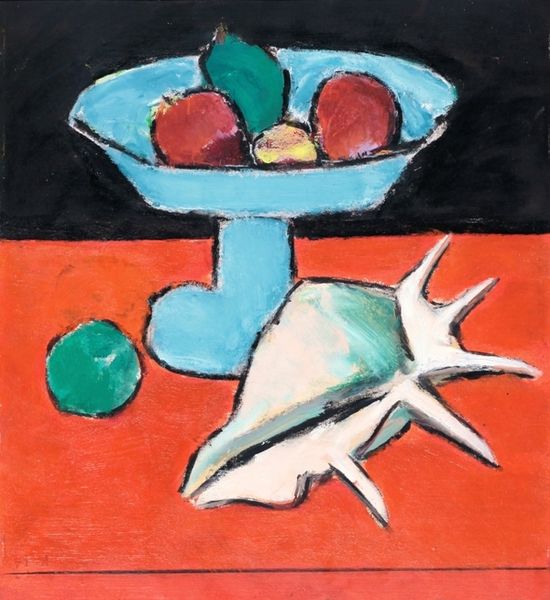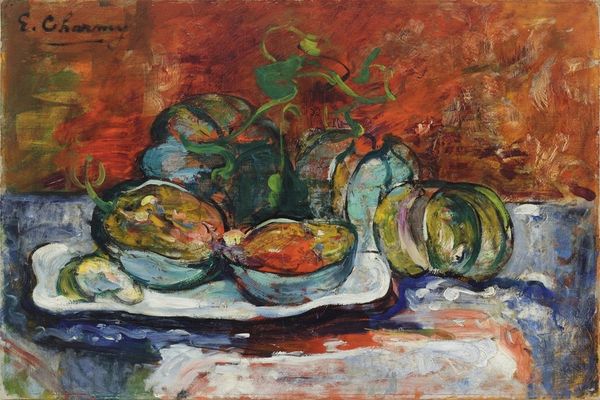
drawing, pastel
#
still-life
#
drawing
#
oil painting
#
fruit
#
pastel
Copyright: Panayiotis Tetsis,Fair Use
Curator: Welcome. Before us is Panayiotis Tetsis's "Still Life", rendered in pastel, showcasing a composition featuring fruit presented in a dish. Editor: Immediately, I notice the mood—quiet, contemplative. The pastels lend a soft, almost dreamlike quality. There's an intimacy here, heightened by the relatively small scale of the work. Curator: Tetsis, known for his dynamic landscapes, here seems to engage with the still life tradition, possibly exploring more personal and enclosed settings. Consider the historical context; how often do we see Greek artists of his time engaging with these conventions? Editor: It makes me wonder about the context in which he made it. The fruit seems almost staged, deliberately placed for observation. The interplay between the domestic and artistic production, makes it difficult to view such scenes separate from larger systems of economic and social production. What does still-life represent in the Greek context versus other artistic epicenters of Europe at that time? Curator: Indeed. Still life, historically, often symbolized transience or abundance. Given the date of the piece, could it be commenting on consumerism? Tetsis’s rendering certainly feels charged with such cultural anxieties. It speaks volumes, doesn't it? The color choices—earthy tones, with splashes of red—how do you think those choices work in that light? Editor: For me, those intense red and yellows jump out, a certain vibrancy disrupting the otherwise subdued palette. It makes you think, almost urgently. What's so significant about this scene and what is its symbolic function? Is Tetsis highlighting beauty or the fleeting nature of existence? The placement of fruit in domestic tableaus also hints at femininity, making me wonder what role gender dynamics have to play in shaping this work, or perhaps informing Tetsis' perception of domesticity. Curator: These readings of yours introduce a wonderful critical dimension, inviting us to think not only about what's represented, but how it signifies within a broader political landscape. It reveals just how dynamic visual representations can be. Editor: Exactly, art doesn't exist in a bubble! Thanks for pointing out ways the seemingly conventional interacts with more intricate networks of identity, production and power.
Comments
No comments
Be the first to comment and join the conversation on the ultimate creative platform.
